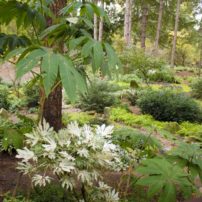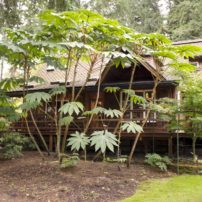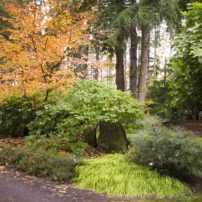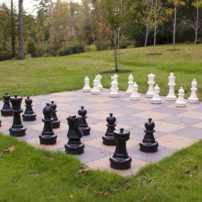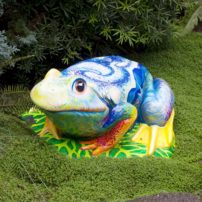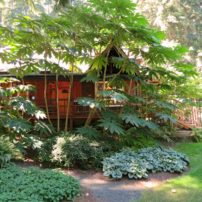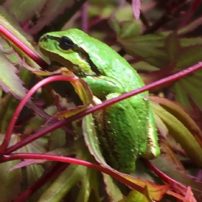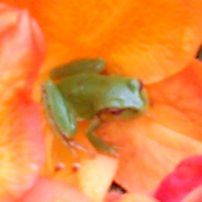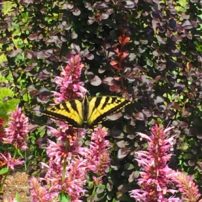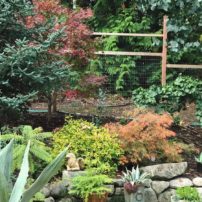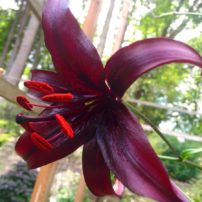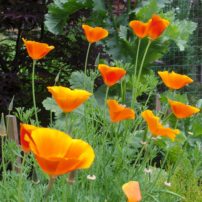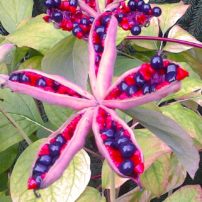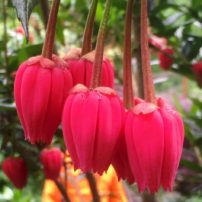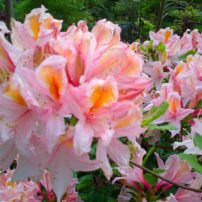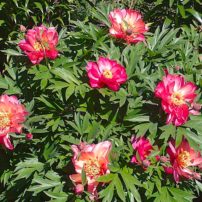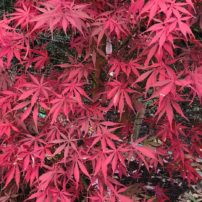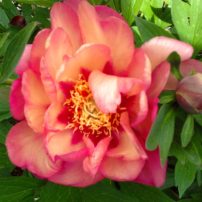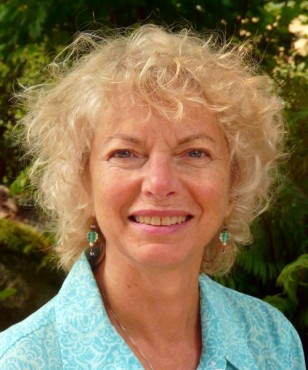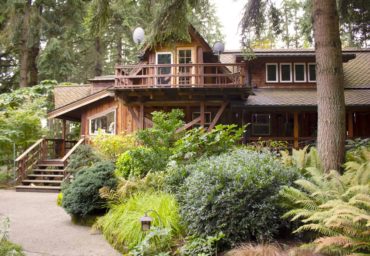 Perhaps it should come as no surprise that, upon moving to Bainbridge Island after growing up in southern California, followed by a dozen years in parched Houston, Carol Folse would become enchanted by woodland spring flowers.
Perhaps it should come as no surprise that, upon moving to Bainbridge Island after growing up in southern California, followed by a dozen years in parched Houston, Carol Folse would become enchanted by woodland spring flowers.
Folse and her husband, Parker, fell in love with Bainbridge during a vacation to Seattle in 1994. While in the area, they visited some friends who were living on the island and commuting to Seattle by ferry. As Parker Folse recalls, “It seemed like an idyllic life.” A year later, the Folses made the move themselves.
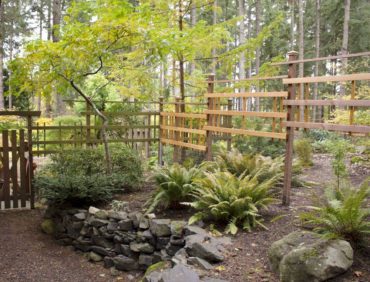 They purchased a home with some interesting quirks (“Never let a sea captain build a house,”Carol Folse says) on 4.5 acres south of Eagle Harbor.
They purchased a home with some interesting quirks (“Never let a sea captain build a house,”Carol Folse says) on 4.5 acres south of Eagle Harbor.
“There were some blueberries and a few ornamentals near the house,” her husband recalls. “The rest was just forest and ferns.”
Parker Folse, who is an attorney, set to work establishing a Seattle office for his Houston law firm, while his wife — a complete novice to gardening — dug into experimenting with Northwest flora.
Twenty-one years, plus four additional, sunnier acres later, their lush garden has been on the itinerary of several garden tours, including Bainbridge in Bloom and the Garden Conservancy. About one quarter of those 8.5 acres are now cultivated.
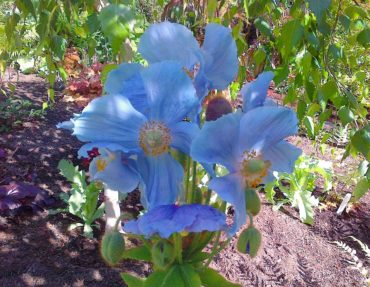
The garden is rich with exotic foliage, contrasting textures and skillful color harmonies. Yet, Folse says, “I don’t plan a damn thing.”
She explains, “I’d go to the nursery and see something I liked, bring it back and think, ‘Where do I put it?’ It took me a while to figure that out. We’ve transplanted many things.” And she’s learned a lot from the staff at Bainbridge Gardens over the years.
Still, several themes are quickly apparent: woodland spring flowers, of course; rare, often giant-leaved plants; Japanese maples; and animals, both live and sculptural.
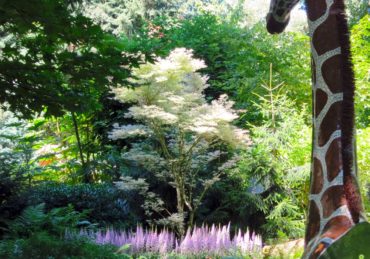
Coming up the entry drive, one first encounters the woodland garden under the dappled shade of towering conifers. A stand of rice-paper plant (Tetrapanax papyrifer), taller than the house, partially screens the porch from the drive. Native to China, this clump-forming plant has deeply lobed leaves that are 1-2 feet wide.
A pebbled path meanders through this shady garden, bordered by a mix of large rocks, waterfall-like mounds of golden Japanese forest grass and several kinds of ferns. Silver-leaved brunnera and gold-leaved bleeding heart light up the understory. Patches of purple-leaved ground-cover Oxalis echo the purple accents of Japanese painted fern.
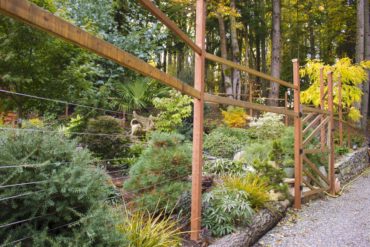 In spring, the woodland blooms with Folse’s beloved trilliums in both white and dark purple, purple-checkered lilies (frittilaria), arisaemas, primroses, yellow fawn lilies, both dark pink and white shooting stars, Corydalis and the famously-difficult-to-grow Himalayan blue poppies. In addition, Folse says, “I get forest orchids that were already here under the trees.”
In spring, the woodland blooms with Folse’s beloved trilliums in both white and dark purple, purple-checkered lilies (frittilaria), arisaemas, primroses, yellow fawn lilies, both dark pink and white shooting stars, Corydalis and the famously-difficult-to-grow Himalayan blue poppies. In addition, Folse says, “I get forest orchids that were already here under the trees.”
As spring warms, irises, peonies, lilies, foxtail lilies and poppies bloom. Colors include everything from deeply saturated hues of nearly black purple, burgundy, red, bright orange and deep yellow to antique shades of rose and peach, and sorbet pastels. Magnolias, azaleas and rhododendrons trumpet a symphony of colors as well.
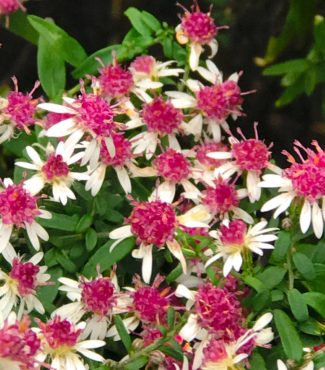 Summer brings hardy fuchsias, hostas, double-pink Japanese anemones, more lilies, hot red crocosmia, lilac-purple astilbe and rarer flowers with unremembered names.
Summer brings hardy fuchsias, hostas, double-pink Japanese anemones, more lilies, hot red crocosmia, lilac-purple astilbe and rarer flowers with unremembered names.
Winter is not a forgotten season here. Near the house, fragrant blossoms of sarcococca, witch hazel and edgeworthia tantalize. Early-blooming hellebores, says Folse, “are divine in the winter.” And the beautyberry, Callicarpa ‘Profusion,’ shows off its violet berries beside a hot-orange garden-art chair.
The garden abounds with giant leaves and unusual plants. A fruit-producing fig tree was already on the property. In addition to the tetrapanax, Folse has added a bigleaf magnolia, three gold-leaved catalpas, variegated spider’s web fatsia, gunnera and May apple. Annual pruning keeps the catalpas producing extra-large leaves.
Not quite so huge of leaf but decidedly exotic are a chocolate-leaved silk tree (a.k.a. mimosa), golden locust, dove tree, celery pine and lemon bottlebrush with pale yellow flowers. A very rare, evergreen Chilean lantern tree enchants with hanging clusters of deep pink, urn-shaped flowers in spring.
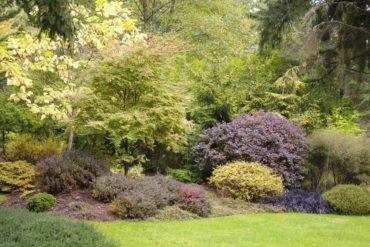 Folse also has a major love affair with Japanese maples. She now has over 180 and does all the pruning herself. One of the most striking, the floating cloud maple, has leaves that are nearly entirely white. It does, indeed, look like a white cloud floating amid the greenery of the woodland garden. In fall, the landscape is aflame with the maples’ many autumn colors.
Folse also has a major love affair with Japanese maples. She now has over 180 and does all the pruning herself. One of the most striking, the floating cloud maple, has leaves that are nearly entirely white. It does, indeed, look like a white cloud floating amid the greenery of the woodland garden. In fall, the landscape is aflame with the maples’ many autumn colors.
As with anywhere on Bainbridge Island, deer are a major issue. (“Deer are evil,” Folse says.) The unfenced, front woodland garden includes deer-resistant plants like sarcococca, euphorbia, daphne, hellebore and acanthus.
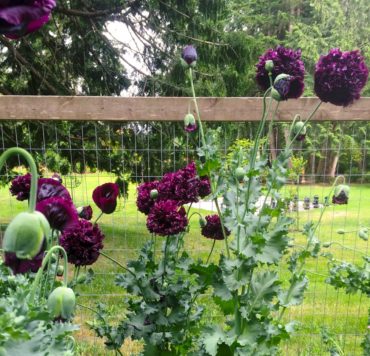 Elsewhere, architecturally striking, 10-foot-high fences now protect three sections of the property from Folse’s least-favorite animal. The first fence, built some years ago, encloses a warm, south-facing garden directly behind the house. Amid winding, flagstone paths, numerous potted plants grow here, including Folse’s bonsai collection and heat-loving agaves.
Elsewhere, architecturally striking, 10-foot-high fences now protect three sections of the property from Folse’s least-favorite animal. The first fence, built some years ago, encloses a warm, south-facing garden directly behind the house. Amid winding, flagstone paths, numerous potted plants grow here, including Folse’s bonsai collection and heat-loving agaves.
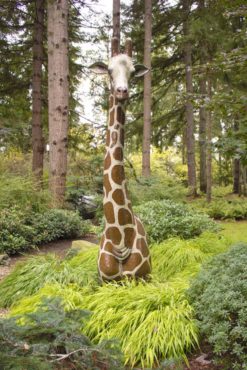 The two newer fenced enclosures were built, following the same design, by Folse’s long-term maintenance assistant. One is in a mostly sunny location. The third — the newest — will enclose a shadier garden, Folse’s next project.
The two newer fenced enclosures were built, following the same design, by Folse’s long-term maintenance assistant. One is in a mostly sunny location. The third — the newest — will enclose a shadier garden, Folse’s next project.
Some animals, however, are decidedly welcome. A fenced barnyard contains a barn, two goats, two adorable miniature donkeys that are hardly bigger than the goats and an undetermined number of hens and roosters.
In addition to helping with gardening tasks a couple of times per week, Folse’s helper built a play structure for the goats that looks like something from a child’s playground, with four platform levels and a ramp.
Tiny native frogs also inhabit the garden. Folse has had unusual success in spotting and photographing these shy little croakers. They’re usually camouflaged on green leaves, but she’s also documented one brazenly on display in a bright orange blossom.
And then there are sculptural animals, like several giant frogs — nearly half the size of a SmartCar. Embellished creatively by local artists, these came from the Bainbridge Island Downtown Association’s “Frogs on the Rock” 2014 auction. “Froggy, Froggy Night,” painted by Leigh Knowles Metteer, is a rendition of van Gogh’s famous work. Another, called “Lily the Frog,” by Raquel Stanek, is covered in mosaic-tiled flowers.
Greeting the visitor near the entry drive, a life-size neck and head of a mosaic-tiled giraffe, also by Stanek, looms above mounds of gold forest grass. A pair of full-size giraffes made of driftwood pose in a clearing under the trees, watched by a life-size driftwood lion. Among a cluster of boulders in another part of the property, a small family of metal goats cavort.
Although not exactly animals, gigantic kings, queens, bishops, rooks, knights and pawns stand on a huge black-and-white chess board in an open, grassy meadow. Occasionally, the Folses notice that unseen players have repositioned the pieces.
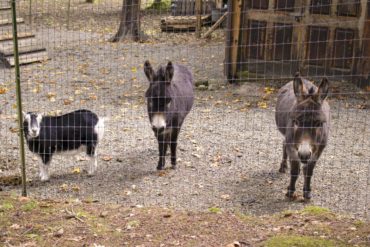 Summing up her garden philosophy, Carol Folse says, “I gravitate toward the unusual.”
Summing up her garden philosophy, Carol Folse says, “I gravitate toward the unusual.”
Blessed with both forest and sunny spaces, her 20-year labor of love demonstrates the rich variety of plant life that thrives in the West Sound climate. And despite her claims that she doesn’t think about what plants she’s putting together, the result appears skillfully planned, harmonious and delightful.




